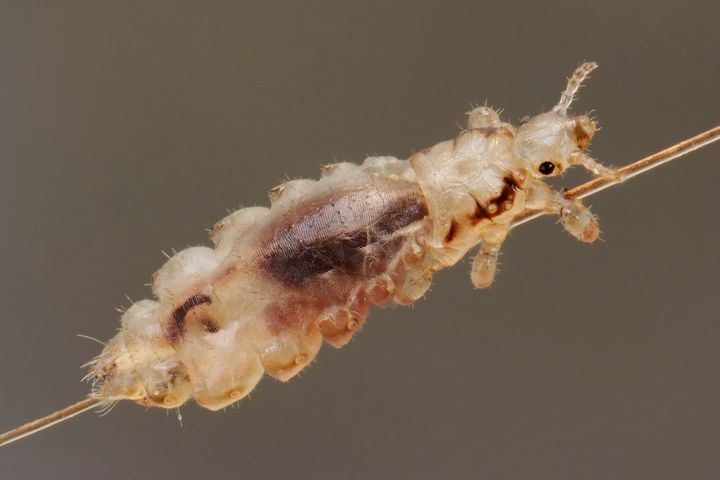
The kids are heading back to school, which can only mean one thing: head lice season is well and truly under way.
According to Ian Burgess, a louse expert and director of the Medical Entomology Centre, head lice cases tend to spike after the summer holidays when children have been socialising with other families.
Then, obviously they take their little hitch-hiking friends with them to school and have lots of close contact with their new school pals. Cue: itchy nit-filled chaos.
But do you know the difference between a head louse and nit? Because, it turns out, we definitely didn’t.
A survey by head lice experts Hedrin, of more than 1,000 UK parents, found over half of those surveyed thought nits and head lice were the same thing.
But it turns out head lice are the living creatures (small insects, about 3mm long) and nits are simply the empty egg cases (usually brown or white in colour) that head lice hatch from. Who knew?
“There are lots of myths about head lice that circulate among parents when an outbreak occurs,” says Burgess.
Here are some of them...
Head lice get nourishment from human hair
Wrong. Half of parents believed this to be true, but the truth is that head lice are a type of parasite that feed on human blood. Mini vampires, basically.
Head lice can jump from head to head
Just one in five (21%) of parents correctly identified this to be false. Head lice actually spread from direct head-to-head contact and can only live a day or so without contact with a human head.
“For a head louse to travel between scalps, very close contact would need to be made,” says Burgess. “This is why cases can be more common between girls who might share hairbrushes and tend to have closer contact than boys when playing.”
Regular shampoo use will keep head lice away
More than a third (36%) of respondents thought this was true, but the cleanliness of your hair makes no difference to a louse. They just want blood.
Head lice spread disease
Almost a third of parents thought this was true (30%) but head lice do not carry diseases, they are just an inconvenience, according to Hedrin.
How to check for and treat head lice
If you’re worried your child might have head lice, don’t panic.
“Having head lice is just part of childhood and shouldn’t be met with panic. I suggest following a simple three step process,” says Burgess.
Remember: check, treat, complete.
“If you make checking for head lice a part of your family’s routine, you’re less likely to feel caught off guard when an outbreak occurs and you can get it treated quickly and easily,” he says.
The louse expert recommends checking your child’s hair for lice once a week using a detection comb (a very fine-toothed comb), ensuring you check behind the ears and underneath the fringe too.
You could do this after applying conditioner to make it more comfortable.
If a live louse is found, that’s the time to get the head lice solution out – bearing in mind to keep it away from the eyes and face, and to follow on-pack instructions. Check everyone else’s hair in the family and then treat as necessary.
The NHS suggests some treatments – like electric combs for head lice, products containing permethrin, and tree and plant oil treatments – are not recommended because they’re unlikely to work.
Burgess recommends checking your child’s hair again in the 2-3 days following treatment to ensure that all head lice have completely gone, and also after a week to ensure that no remaining eggs have hatched new lice.
“In some cases a second application might be necessary,” he adds. Happy lousing!